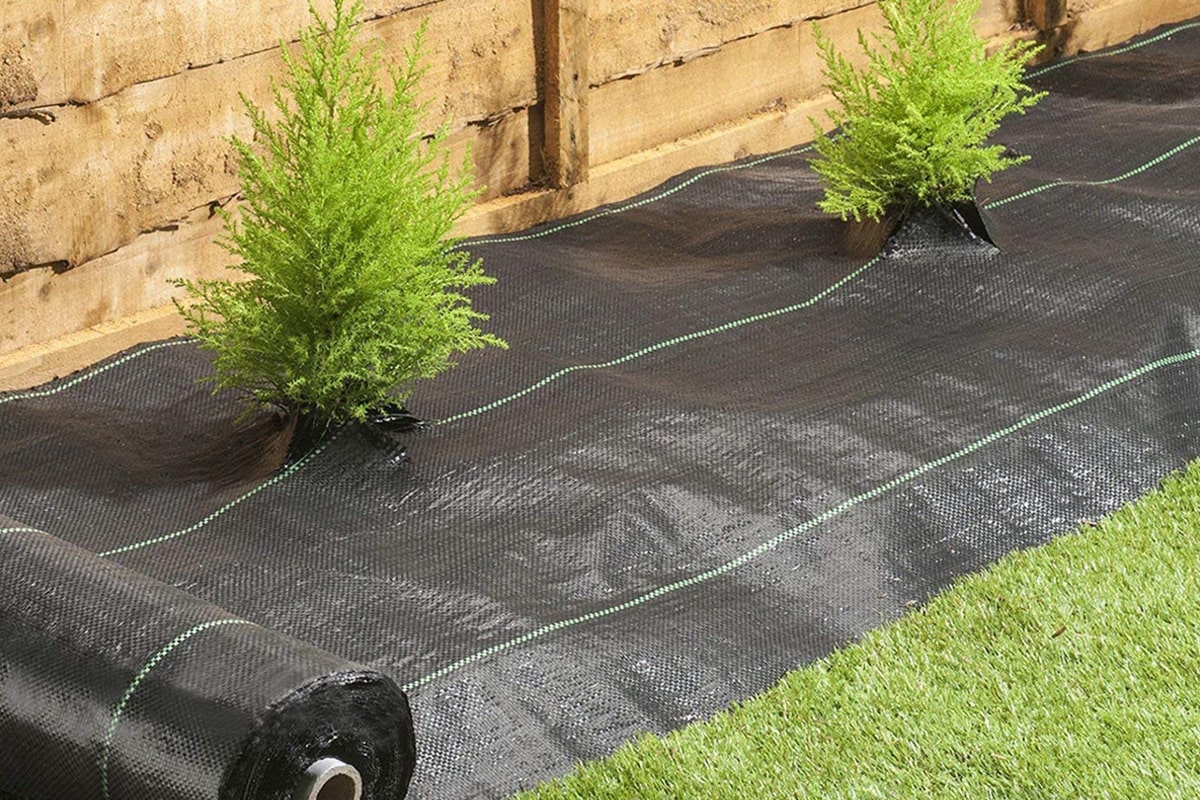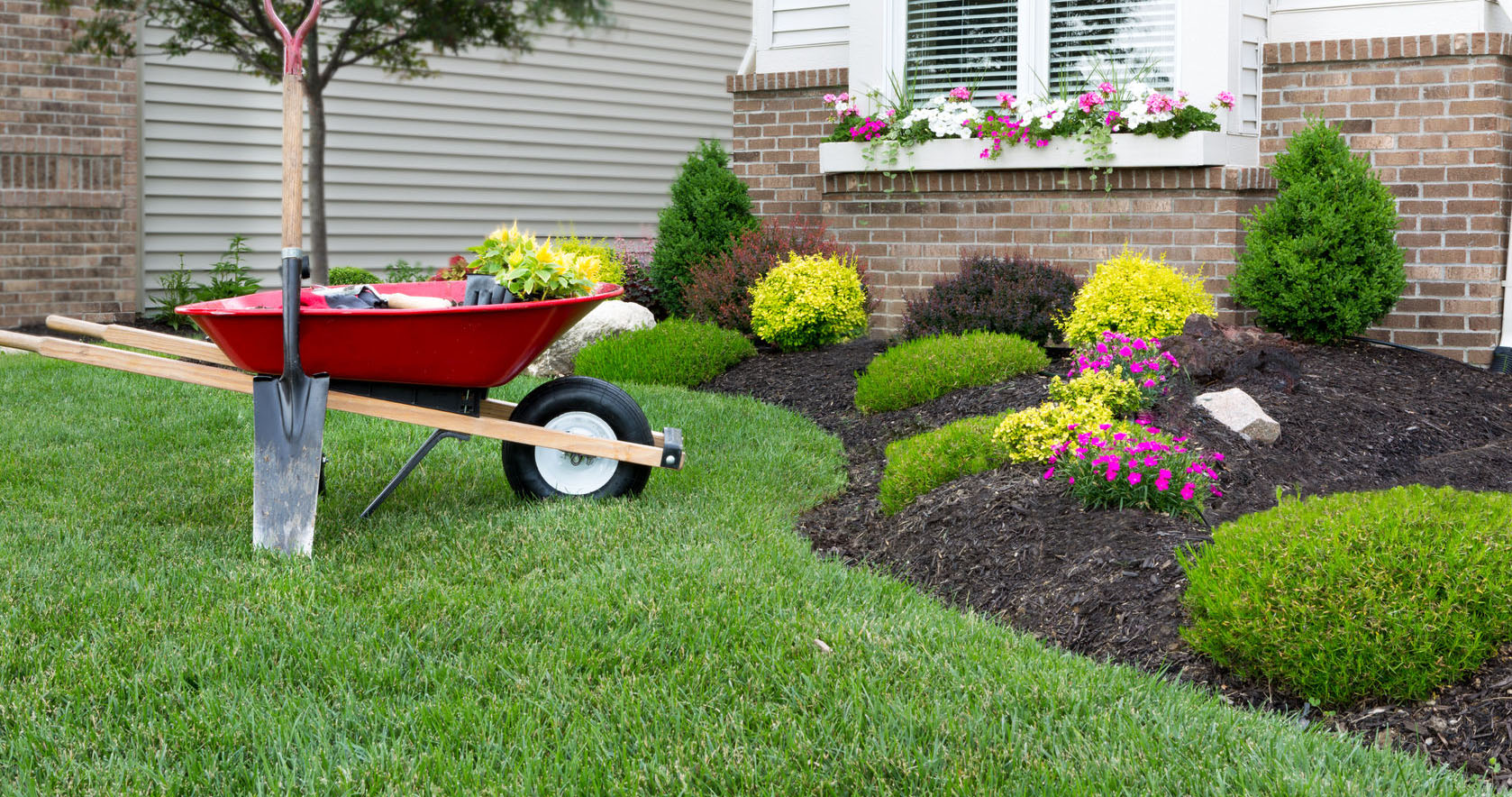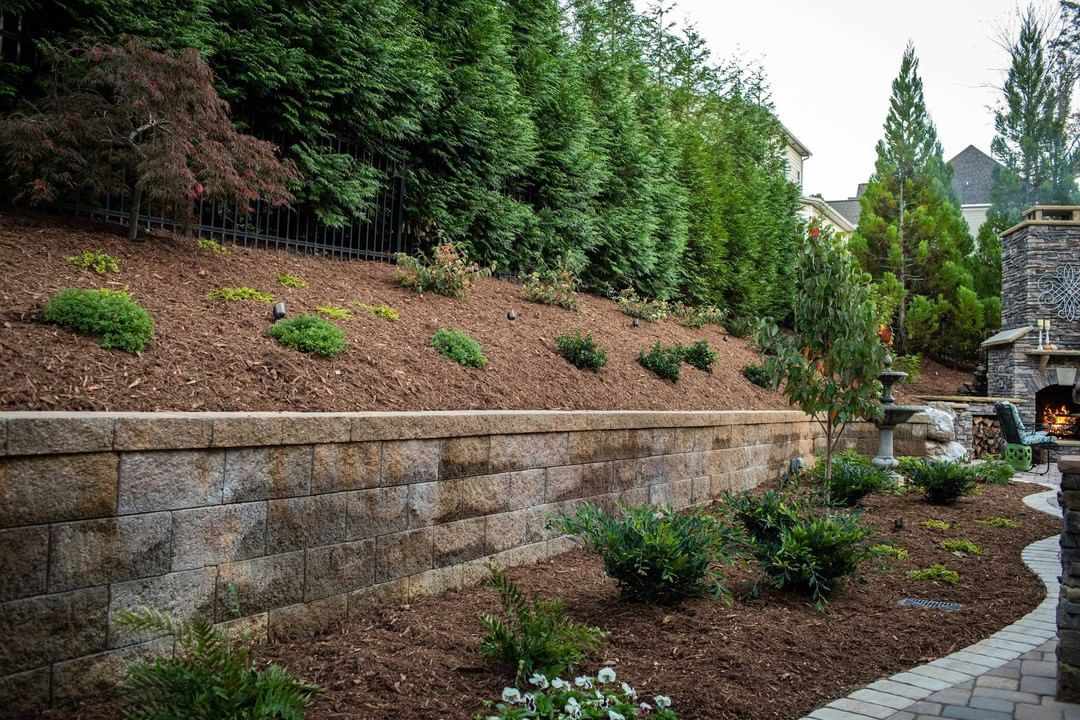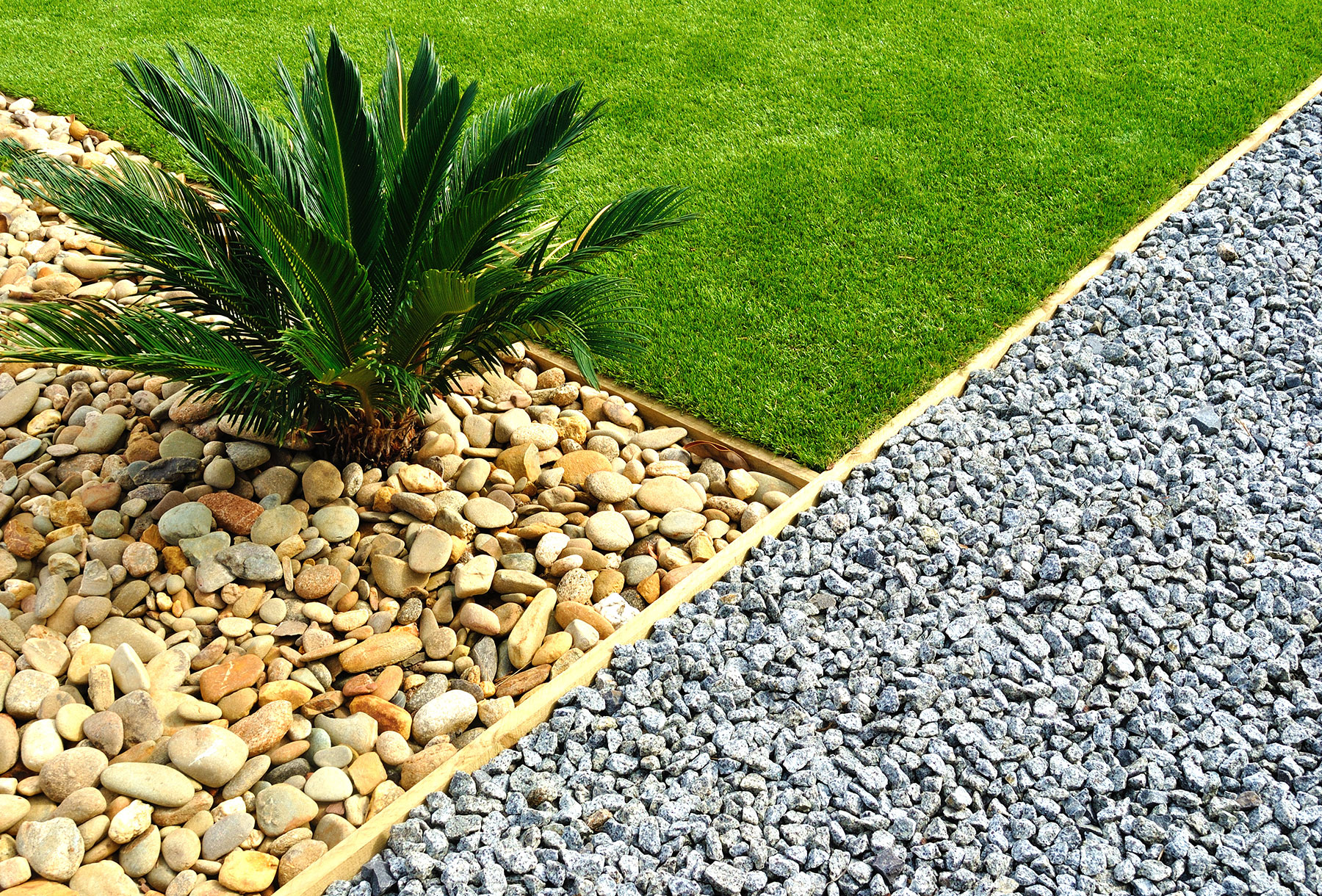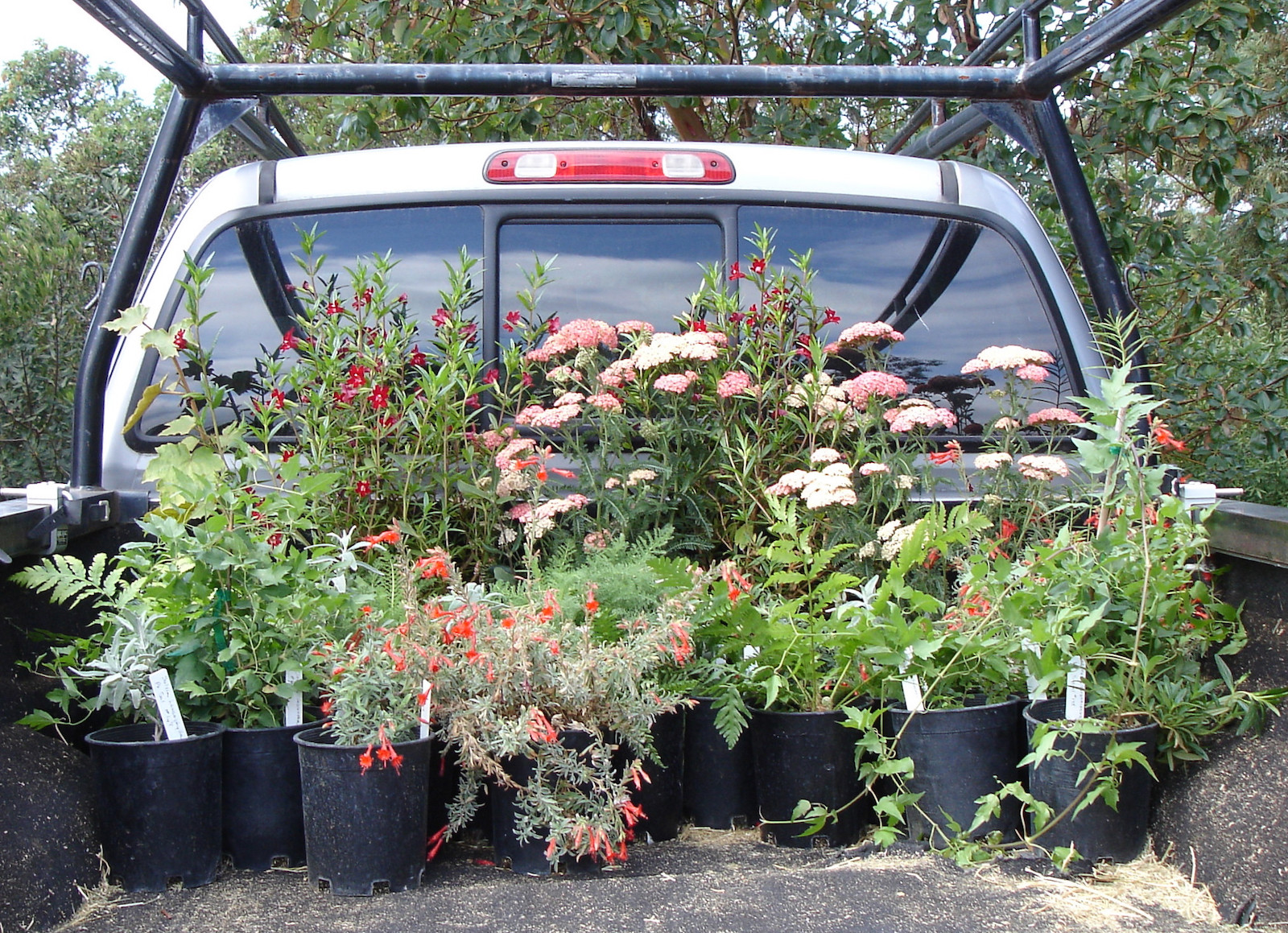Home>Gardening News and Trends>Gardening Trends>What Is Xeriscaping Landscaping


Gardening Trends
What Is Xeriscaping Landscaping
Modified: January 22, 2024
Discover the latest gardening trends with xeriscaping landscaping. Create an eco-friendly and low-maintenance garden that saves water while adding beauty to your outdoor space.
(Many of the links in this article redirect to a specific reviewed product. Your purchase of these products through affiliate links helps to generate commission for Chicagolandgardening.com, at no extra cost. Learn more)
Table of Contents
- Introduction
- Definition of Xeriscaping Landscaping
- Benefits of Xeriscaping
- Principles of Xeriscaping
- Choosing the Right Plants for Xeriscaping
- Water Conservation Techniques in Xeriscaping
- Designing an Efficient Xeriscape Layout
- Maintenance and Care for Xeriscaped Gardens
- Examples of Successful Xeriscape Projects
- Conclusion
Introduction
Welcome to the world of xeriscaping landscaping! In a time when water scarcity and environmental concerns are becoming increasingly prominent, xeriscaping has emerged as a popular and sustainable gardening trend. Xeriscaping, derived from the Greek word “xeros” meaning dry, is a landscaping technique that focuses on minimizing water usage while creating beautiful and functional outdoor spaces.
Traditional landscaping often involves the use of extensive amounts of water, which can put a strain on local water resources and contribute to water waste. Xeriscaping, on the other hand, takes a different approach by utilizing low-water and drought-tolerant plants, efficient irrigation systems, and water-conservation techniques to create gardens that thrive with minimal water requirements.
Not only does xeriscaping help to conserve water, but it also offers numerous other benefits. From reducing maintenance needs and lowering utility costs to enhancing biodiversity and increasing property value, xeriscaping has gained recognition as an eco-conscious and aesthetically appealing landscaping solution.
In this article, we will explore the concept of xeriscaping landscaping in detail, including the principles, plant selection, water conservation techniques, layout design, and maintenance tips. We will also showcase some inspiring examples of successful xeriscape projects for inspiration.
Whether you are a gardening enthusiast looking to create a sustainable and beautiful outdoor space or a homeowner looking to reduce water consumption and maintenance efforts, xeriscaping offers a practical and visually pleasing solution. Let us embark on this journey together and discover the wonders of xeriscaping landscaping.
Definition of Xeriscaping Landscaping
Xeriscaping landscaping is a method of gardening and landscaping that aims to reduce water usage and create sustainable outdoor spaces. The term “xeriscaping” was coined by the Denver Water Department in the 1980s, combining the Greek word “xeros” meaning dry with “landscaping.”
At its core, xeriscaping is about designing and maintaining landscapes that require minimal water input beyond what is naturally available through rainfall. This is achieved through strategic plant selection, efficient irrigation systems, water-conservation techniques, and thoughtful design.
Xeriscaping landscaping is not limited to arid or desert regions; it can be applied in any climate or geographical location. The key is to adapt the principles of xeriscaping to suit the specific needs and conditions of the area. By reducing water consumption, xeriscaping landscaping helps to conserve water resources, reduce water bills, and minimize the environmental impact of traditional landscaping practices.
One misconception about xeriscaping is that it means replacing all the grass in a yard with rocks and cacti. While the use of drought-tolerant plants is a key aspect of xeriscaping, it is not limited to desert-like aesthetics. Xeriscaped gardens can be just as lush and visually appealing as traditional gardens, using a variety of native or adaptive plants that require less water to thrive.
Furthermore, xeriscaping landscaping extends beyond plant selection. It also encompasses efficient irrigation systems, such as drip irrigation or a rainwater harvesting system, to ensure that water is used effectively and not wasted. Additionally, utilizing mulch and incorporating water-saving techniques, such as contouring the landscape to capture rainwater or installing permeable surfaces, are essential components of xeriscaping.
In essence, xeriscaping landscaping is a mindful and sustainable approach to landscaping that promotes water conservation, embraces the natural environment, and creates beautiful and functional outdoor spaces that are in harmony with the surrounding ecosystem. By implementing xeriscaping principles, you can enjoy a vibrant and low-maintenance landscape while reducing your impact on the environment.
Benefits of Xeriscaping
Xeriscaping offers a multitude of benefits, making it an attractive choice for both homeowners and the environment. Here are some of the key advantages of incorporating xeriscaping into your landscaping:
- Water Conservation: One of the primary benefits of xeriscaping is its ability to significantly reduce water consumption. By incorporating drought-tolerant plants, implementing efficient irrigation systems, and using water-saving techniques, xeriscaped landscapes can use up to 50% less water compared to traditional landscapes.
- Lower Utility Costs: With reduced water usage, xeriscaping can lead to lower water bills. Additionally, xeriscaped gardens often require less maintenance, resulting in decreased maintenance costs and savings on labor or garden services.
- Environmental Sustainability: Xeriscaping is an eco-friendly landscaping option that helps conserve water resources. By minimizing water usage and eliminating the need for harmful chemical fertilizers or pesticides, xeriscaping reduces the negative impact on ecosystems and promotes biodiversity in the local environment.
- Improved Property Value: Xeriscaping can enhance the value of your property. Its low-maintenance nature and sustainable appeal can make your home more attractive to potential buyers. Additionally, xeriscaped gardens often have beautiful and well-designed outdoor spaces, which can increase curb appeal.
- Drought Resistance: Drought-tolerant plants used in xeriscaping are specifically chosen for their ability to survive in dry conditions. This means that even during periods of water restrictions or drought, your xeriscaped garden will remain green and vibrant without requiring excessive amounts of water.
- Reduced Maintenance Efforts: Traditional gardens often demand considerable time and effort for mowing, watering, and pruning. Xeriscaping, with its focus on selecting low-maintenance plants and efficient irrigation systems, reduces the need for constant upkeep. This frees up time for you to enjoy your garden rather than constantly tending to it.
- Resilience to Climate Change: As the world faces increasing climate challenges, including rising temperatures and water scarcity, xeriscaping proves to be a resilient solution. Its emphasis on water efficiency and adapting to the local environment makes xeriscaped landscapes better equipped to withstand climate variations and extremes.
These benefits demonstrate why xeriscaping has become a popular landscaping trend. By implementing xeriscaping principles, you can create a visually stunning and sustainable outdoor space while reducing water usage and promoting environmental stewardship.
Principles of Xeriscaping
Xeriscaping is guided by several key principles that allow for the creation of water-efficient and sustainable landscapes. By understanding and applying these principles, you can design a successful xeriscape that thrives with minimal water requirements. Here are the fundamental principles of xeriscaping:
- Planning and Design: The first step in xeriscaping is careful planning and design. Consider the layout and functionality of your outdoor space, taking into account factors such as sunlight exposure, soil conditions, and water availability. By analyzing these aspects, you can optimize the design for water efficiency and visual appeal.
- Soil Improvement: Healthy soil is essential for the success of any garden. Prioritize soil improvement by incorporating organic matter, such as compost, into the soil. This improves drainage, increases water retention, and enhances nutrient availability for your plants.
- Plant Selection: Choose native or adaptive plants that are well-suited to your climate and soil conditions. These plants have evolved to thrive in local conditions, requiring less water and maintenance. Avoid planting invasive species that can disrupt local ecosystems.
- Efficient Irrigation: Utilize efficient irrigation methods to minimize water waste. Drip irrigation systems or soaker hoses deliver water directly to the root zone, reducing evaporation and ensuring efficient water usage. Consider installing a smart irrigation controller that adjusts watering based on weather conditions and plant needs.
- Mulching: Apply a layer of organic mulch, such as wood chips or straw, around plants to conserve soil moisture, suppress weed growth, and regulate soil temperature. Mulch also helps prevent erosion and adds an aesthetic appeal to your xeriscape.
- Water Conservation Techniques: Implement water-saving techniques to further reduce water consumption. This can include rainwater harvesting, where rainwater is collected and stored for later use, or using gray water from household sources for irrigation purposes. Both methods contribute to water conservation and reduce reliance on freshwater sources.
- Proper Maintenance: Regular maintenance is crucial in ensuring the long-term success of your xeriscape. This includes pruning, weeding, and removing debris. Monitoring plant health and adjusting irrigation schedules according to seasonal needs are also essential to maintain the health and vitality of your xeriscape.
By following these principles, you can create an aesthetically pleasing and environmentally sustainable xeriscape. Each principle contributes to water conservation, promotes plant health, and reduces maintenance requirements, allowing you to enjoy a beautiful and thriving landscape while honoring your commitment to sustainability.
Choosing the Right Plants for Xeriscaping
One of the key elements in xeriscaping is selecting the right plants that are suited for water-efficient landscaping. By choosing drought-tolerant and native plants, you can create a vibrant and sustainable xeriscape. Here are some tips for selecting the right plants for xeriscaping:
- Research Native and Adaptive Plants: Look for plants that are native to your area or adapted to the local climate. Native plants are naturally suited to local conditions and require minimal water and maintenance once established. They also provide habitat for local wildlife and contribute to the overall biodiversity of your xeriscape.
- Consider Water Needs: Assess the water requirements of different plant species. Choose low-water or drought-tolerant plants that can thrive with minimal irrigation. Look for plants with silver or gray foliage, as they often have adaptations that help them conserve water.
- Group Plants Based on Water Needs: Group plants with similar water requirements together. This allows for efficient irrigation practices, as you can create separate zones or use drip irrigation systems that target the specific water needs of each group. Avoid mixing plants with high and low water requirements in the same area.
- Pay Attention to Soil Conditions: Consider the soil type and drainage capabilities of your garden. Choose plants that are well-suited to the soil conditions in your area. If the soil is dry and sandy, choose plants that are adapted to this type of soil. Similarly, if the soil is heavy and clayey, seek out plants that can thrive in such conditions.
- Consider Plant Height and Spread: Take into account the mature size of the plants you choose. Ensure that they have enough space to grow without overcrowding each other. This prevents competition for water and nutrients, and allows each plant to reach its full potential.
- Utilize Groundcovers: Incorporate low-growing groundcovers, such as creeping thyme or sedum, that help to reduce soil erosion, suppress weed growth, and conserve moisture in the soil. These plants also add visual interest and function as living mulch.
- Plant for Seasonal Interest: Choose plants that offer year-round interest by considering their bloom time, foliage color, and texture. This ensures that your xeriscape remains visually appealing throughout the seasons, providing color and texture variations over time.
Remember, xeriscaping doesn’t mean sacrificing beauty. By carefully selecting and grouping plants based on their water needs and considering the unique characteristics of your garden, you can create a stunning xeriscape that thrives with minimal water requirements and adds value to your outdoor space.
Water Conservation Techniques in Xeriscaping
Water conservation is a central aspect of xeriscaping. By implementing various water-saving techniques, you can minimize water waste and maximize the efficiency of water usage in your xeriscape. Here are some effective water conservation techniques to consider:
- Efficient Irrigation: Choose an irrigation system that delivers water directly to the root zone of plants, such as drip irrigation or soaker hoses. This method reduces evaporation and targets water where it’s needed most. Avoid overhead sprinklers, as they can result in excessive water loss due to wind and evaporation.
- Use Rainwater Harvesting: Collect rainwater from roofs or other surfaces using rain barrels or cisterns. This stored rainwater can then be used for irrigation during dry periods. Rainwater harvesting not only conserves water but also reduces stormwater runoff and the strain on local water resources.
- Implement Smart Irrigation Controllers: Install weather-based or soil moisture-based controllers for your irrigation system. These controllers adjust watering schedules based on local weather conditions and the moisture levels in the soil, eliminating the need for manual adjustments and preventing overwatering.
- Utilize Mulch: Apply a layer of organic mulch, such as wood chips or straw, around your plants and in your garden beds. Mulch helps to reduce evaporation, regulate soil temperature, and inhibit weed growth. It also aids in retaining moisture in the soil, reducing the need for frequent watering.
- Practice Deep Watering: Water deeply and infrequently to encourage plants to develop deep root systems. This promotes plant health and resilience, as the deeper roots can access water deeper in the soil and are less dependent on frequent irrigation.
- Group Plants with Similar Water Needs: Arrange plants with similar water requirements together in your landscape. This allows for more efficient irrigation, as you can avoid overwatering plants that need less water by providing water only to the areas that require it.
- Capture and Use Gray Water: Gray water is wastewater from sources such as sinks, showers, and laundry. With appropriate treatment and filtering, gray water can be safely used for irrigation purposes, reducing the demand for freshwater. Check local regulations and guidelines before implementing a gray water system.
- Implement Xeriscape Design Techniques: Incorporate design elements that promote water efficiency, such as using swales to capture and channel rainwater, creating berms to retain water, or installing permeable surfaces that allow rainwater to infiltrate the soil rather than run off.
By utilizing these water conservation techniques in your xeriscape, you can significantly reduce water usage while maintaining the health and beauty of your garden. Conserving water not only benefits the environment but also helps to lower water bills and supports sustainable gardening practices.
Designing an Efficient Xeriscape Layout
The layout of your xeriscape plays a crucial role in its efficiency and aesthetics. By carefully considering the design elements, you can create a well-planned and visually appealing xeriscape that maximizes water efficiency. Here are some tips for designing an efficient xeriscape layout:
- Consider the Natural Landscape: Take inspiration from the natural features of your site. Work with the existing topography, soil conditions, and microclimates to create a harmonious and low-maintenance landscape. Utilize slopes, rock formations, or natural depressions to guide water flow and placement of plants.
- Create Functional Zones: Divide your xeriscape into functional zones based on water needs and usage. Group plants with similar water requirements together, creating separate irrigation zones. Designate areas for active use, such as a seating area or play space, and balance them with more natural and low-maintenance areas.
- Optimize Plant Placement: Consider the mature size and growth habits of plants when placing them in your xeriscape. Allow ample space for the plants to grow without overcrowding. Pay attention to sun exposure, wind patterns, and shade, and place plants accordingly to optimize their growth and water needs.
- Create Focal Points: Incorporate eye-catching focal points in your xeriscape to guide the viewer’s attention and add visual interest. This could be a well-placed sculpture, a specimen plant, or a water feature. Focal points draw the eye and create a sense of balance and dynamic in the overall design.
- Use Pathways and Hardscapes: Integrate pathways, patios, and other hardscape elements in your xeriscape to establish a flow and define functional spaces. Use permeable materials, such as gravel or pavers with gaps, to allow water to infiltrate the soil rather than creating runoff. Incorporate curves and meandering paths to create a sense of movement and interest.
- Consider Scale and Layering: Vary the heights and textures of your plants to create a layered and visually appealing landscape. Use taller plants as a backdrop, followed by medium-sized and ground-hugging plants. This creates depth and texture, giving your xeriscape a more natural and dynamic appearance.
- Balance Hardscape with Softscape: Achieve a balance between hardscape and softscape elements in your design. The judicious use of gravel, rocks, or mulch can add texture and visual interest. However, ensure that the majority of your xeriscape consists of drought-tolerant plants to provide shade, reduce heat, and support local biodiversity.
Remember to always consider water efficiency, functionality, and aesthetics when designing your xeriscape layout. By carefully planning and balancing the design elements, you can create an efficient and visually captivating xeriscape that embodies sustainability and enhances the beauty of your outdoor space.
Maintenance and Care for Xeriscaped Gardens
Maintaining a xeriscaped garden is relatively easy and requires less time and effort compared to traditional landscapes. However, periodic maintenance is still essential to ensure the health and longevity of your xeriscape. Here are some key maintenance practices to keep in mind:
- Watering: Monitor your plants’ water needs and adjust your irrigation schedule accordingly. While xeriscaped gardens require less water, it is important to ensure that your plants receive adequate hydration. Water deeply and infrequently, allowing the soil to dry out between watering sessions to encourage deep root growth.
- Weeding: Regularly remove weeds that may compete with your plants for water and nutrients. Hand-pulling or using organic weed control methods, such as mulching, can help prevent weed growth without the use of harmful chemicals.
- Trimming and Pruning: Prune your plants as needed to maintain their shape, remove dead or damaged branches, and promote healthy growth. Trim back any overgrown or leggy foliage to encourage bushier growth patterns and maintain an orderly appearance in your xeriscape.
- Fertilization: Xeriscaped gardens typically require minimal fertilization, as many drought-tolerant plants have adapted to nutrient-poor soils. However, a light application of slow-release fertilizer in early spring can provide a boost of nutrients to support healthy plant growth.
- Monitoring Pest and Disease: Regularly inspect your plants for signs of pest infestation or disease. Early detection allows for prompt treatment using organic or low-impact methods. Integrated Pest Management (IPM) practices can help you effectively manage pests while minimizing the use of harmful chemicals.
- Maintaining Mulch: Periodically replenish mulch in your xeriscape to maintain its depth and effectiveness. This helps to conserve soil moisture, regulate soil temperature, and suppress weed growth. Reapplying mulch also enhances the visual appeal of your landscape.
- Seasonal Adjustments: Adapt your maintenance routine to suit the changing seasons. Adjust your irrigation schedule, prune or deadhead plants, and clean up fallen leaves or debris accordingly. This ensures that your xeriscape remains healthy and visually appealing throughout the year.
- Evaluation and Adjustments: Regularly evaluate the performance of your xeriscape and make necessary adjustments. Assess the growth of your plants, the effectiveness of your irrigation system, and the overall appearance of your garden. This allows you to fine-tune your xeriscape for optimal water efficiency and aesthetics.
By following these maintenance practices, you can enjoy a thriving and beautiful xeriscape with minimal effort. Regular observation, timely care, and adjustments as needed will ensure that your xeriscape continues to flourish and provide lasting benefits for years to come.
Examples of Successful Xeriscape Projects
There are numerous examples of successful xeriscape projects that demonstrate the beauty, versatility, and water-saving potential of this landscaping technique. Here are a few notable examples:
- Gardens by the Bay, Singapore: Located in the heart of Singapore, Gardens by the Bay showcases a stunning xeriscape design. With its innovative Supertrees, vertical gardens, and careful selection of drought-tolerant plants, this iconic attraction proves that xeriscaping can be both visually impressive and sustainable.
- Denver Botanic Gardens, Colorado, USA: Known for its leadership in xeriscaping, the Denver Botanic Gardens showcases a wide variety of xeriscape gardens. From the Dryland Mesa, featuring native plants adapted to Colorado’s arid conditions, to the South African Plaza, displaying the beauty of water-wise succulents, these gardens inspire visitors with their creativity and water-conscious design.
- Xeriscape Demonstration Garden, California, USA: The Xeriscape Demonstration Garden in California serves as a living example of how xeriscaping can thrive in a challenging desert environment. With its use of native plants, efficient irrigation systems, and mulching techniques, this garden provides a wealth of inspiration for homeowners and landscapers looking to create water-efficient landscapes.
- Mediterranean Xeriscape Gardens, Europe: In regions with a Mediterranean climate, such as Southern France, Greece, and Spain, xeriscaping is a natural choice. These landscapes showcase the beauty of drought-tolerant plants like lavender, rosemary, and bougainvillea, paired with gravel pathways and stonework. These xeriscape gardens celebrate the unique charm of the Mediterranean region while reducing water consumption.
- Xeriscaped Residential Neighborhoods, Arizona, USA: Many residential neighborhoods in Arizona have adopted xeriscaping to create water-efficient and visually stunning landscapes. These neighborhoods feature a diverse array of desert-adapted plants, rock gardens, and water-conservation techniques like rainwater harvesting and drip irrigation. The result is a community that showcases the natural beauty of the desert while conserving water resources.
These examples illustrate the versatility and success of xeriscaping across different climates and landscapes. Whether it’s a large-scale public garden or a residential backyard, xeriscaping offers the opportunity to create aesthetically pleasing outdoor spaces that thrive with minimal water usage. These projects inspire us to embrace xeriscaping and its sustainable principles in our own gardens.
Conclusion
Xeriscaping landscaping has emerged as a practical and sustainable gardening trend, offering numerous benefits and innovative approaches to water conservation. By implementing xeriscaping principles such as careful plant selection, efficient irrigation systems, and thoughtful design, homeowners and landscape professionals can create beautiful, water-efficient, and environmentally friendly landscapes.
The advantages of xeriscaping are compelling. From conserving water and reducing utility costs to promoting biodiversity and increasing property value, xeriscaping presents a holistic approach to landscaping that aligns with our growing environmental concerns.
Throughout this article, we have explored the definition of xeriscaping and its principles, examined the benefits it offers, and delved into various techniques for creating efficient xeriscape layouts. We have also highlighted the importance of choosing the right plants, conserving water, and maintaining xeriscaped gardens.
By embracing xeriscaping, you can create visually stunning landscapes that thrive with minimal water requirements. Xeriscaping allows us to not only enjoy the beauty of nature but also take an active role in preserving water resources and promoting ecological sustainability.
Whether you are a gardening enthusiast seeking a low-maintenance and environmentally friendly landscape, a homeowner looking to reduce water consumption and lower utility bills, or a landscape professional aiming to implement sustainable practices, xeriscaping offers a practical and visually appealing solution.
So, let’s embrace xeriscaping and join the movement towards creating beautiful, sustainable, and water-wise landscapes for a greener future.
